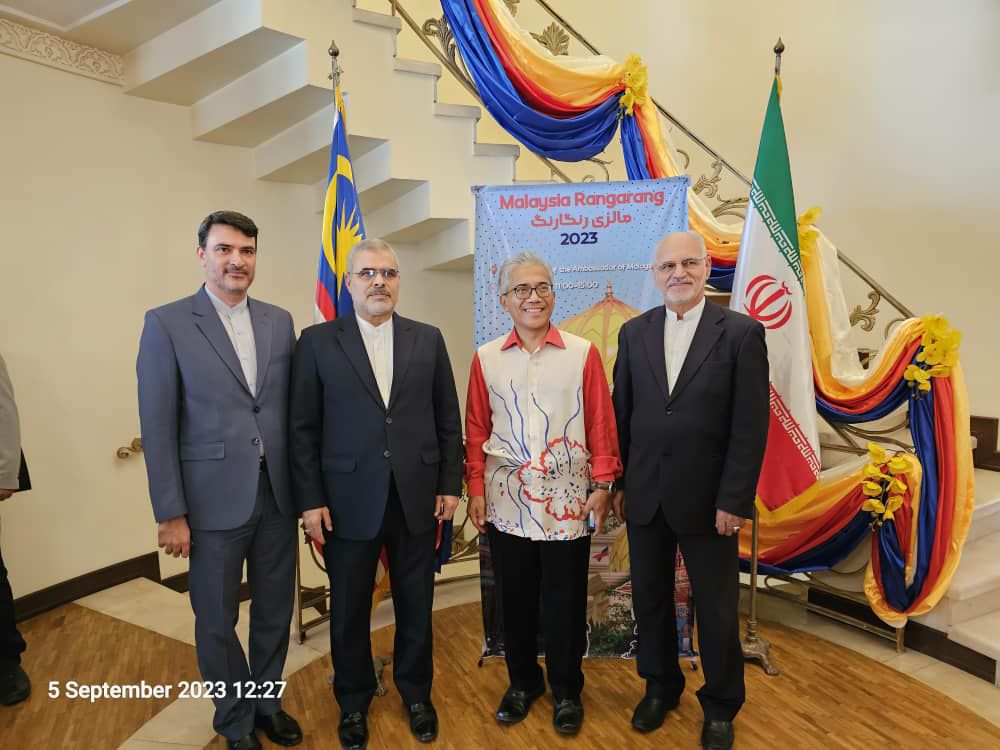From Personal Expression to Impartial Order: A Look at the Works of Ehsan Azimi Mojaver
TEHRAN (Iran News) While self-sufficient, Mojaver’s works distance themselves from formal clichés and established aesthetic conventions. By avoiding showiness, self-exposure, and artistic jargon, he seeks to achieve something universal, not decorative, but essential; not timeless in the sense of detached abstraction, but rooted in the ongoing, inward encounter with canvas and paint, with material and perception.
One of the primary influences on Ehsan Azimi Mojaver’s painting is the post-painterly abstraction movement, or color-space painting, initiated by Barnett Newman, which marked the rise of a new abstract classicism. A key figure in shaping the foundations of this movement was Josef Albers, a former Bauhaus artist who taught at Black Mountain College and later Yale University. Through his influential book Interaction of Color (1943) and his iconic Homage to the Square series, Albers established the theoretical and visual basis for understanding the relational effects of color through repeated square forms. Artists such as Newman, Ad Reinhardt, Kenneth Noland, and Frank Stella carried this tradition forward, drawing on earlier innovations by Robert Rauschenberg, particularly his Black Paintings and White Paintings from 195, and Jasper Johns, whose Flags (1954) merged form and content using pre-existing symbols. In abandoning personal narrative and using standardized forms, these artists helped define a mode of painting where form and meaning are inseparable.
With this background, Ehsan Azimi Mojaver rejects reliance on spontaneous inspiration or individual expression, moving instead toward visual neutrality and the absence of signs. He approaches painting with a studied and structural mindset, turning away from the temporal, the psychological, and the personal. For him, a work of art is an eternal phenomenon, a manifestation of the absolute. This vision, first articulated by Barnett Newman through a disciplined form of abstract expressionism that pointed toward a new classicism, now finds renewed expression in Ehsan’s practice, shaped in part by the mediating influence of Josef Albers.
Mojaver composes his images using a few defined geometric forms, deliberately distancing himself from individual expression. His color choices either maintain a perfectly flat surface or are so diluted that the trace of the painter’s hand vanishes. He focuses on the intrinsic value of color, reducing formal expression to a minimal use of essential visual elements. For him, the canvas is no longer an illusionistic space but a self-sufficient object, equal in presence to the other components of the painting.
In Mojaver’s work, the traditional, window-like nature of painting is eliminated; the illusion of depth or penetrable space disappears. By treating the image as an object, he elevates the role of edges, no longer seen as boundaries, but as integral components of the composition. In his recent series, he dissolves the opposition between form and surface, achieving a unified harmony between form and content. At this point, the artwork no longer conveys a message, it is the message, asserting a renewed sense of objecthood and presence.
At this stage, painting becomes a self-sufficient and independent statement, no longer requiring the intervention of personal emotion. Yet Ehsan opens a new territory by subtly referencing traditional motifs drawn from his heritage, the lived geography of Iran. Within this mode of abstraction, he remains anchored to the essence of reality; or, more precisely, he renders the reality of an idea. In his work, the romanticism of abstract expressionism gives way to a minimalist, abstract classicism. Here, the simplicity and impenetrability of the image resist interpretation, while affirming the absolute authority of the artwork’s presence.
A defining feature of Mojaver’s work is the absence of psychological or personal connotation. His paintings convey ambition, ideals, and ideas, yet without relying on personal realization or expressive gestures. Mojaver consciously distances himself from the legacy of abstract expressionism and remains skeptical of action painting and its unrepeatable, theatrical movements. Instead, his practice embraces restraint, structure, and the quiet assertion of form.
For Mojaver, individual self-expression is not merely avoided, its removal becomes a deliberate method for reaching a new, impersonal kind of meaning. Personal content is stripped from the work, and in its place, ideals and ambitions are redefined as the guiding poles of an objective, formal structure.
In his paintings, impersonal and unchanging values are recognized and elevated to the level of the absolute. Color, in its intrinsic nature, replaces inner truth and subjective perception. The desire to merge with inner emotions, so central to action painting, is replaced here by the ambition to invent visual concepts that reveal the pure, inherent value of color itself.
This form of painting functions like an aesthetic equation, where all personal and psychological content is excluded. If there is truth, it lies only in abstraction and in the void, as Kazimir Malevich described in The Non-Objective World. This sensibility is echoed in the monochrome works of Mojaver. For him, the ideal is not something to be achieved, but something to be revealed, defined negatively, as the great void or pure being. In these paintings, expressive forms are stripped of personal meaning; expression takes place through concept, delivered with an abstract and impartial character. Concept here serves absolute representation, the presentation of color as it is.
For Mojaver, the central question is how to give form to the intrinsic value of color and the self-organization of the image, without confining them to fixed forms or separating them from form altogether. How can one express emptiness and silence, and give objectivity to the void? How can a painter clearly and concisely state that they have nothing to declare? The answer lies in concept creation, his most significant creative achievement. Yet, to avoid being a mere ascetic, Mojaver introduces new strategies: incorporating simple, native visual elements and defining structural rules for their combination, movement, or displacement. In doing so, he creates a system of elements and relationships, fixed and variable, that reveals unity within multiplicity, and the possibility of infinity within defined limits.
These works do not contain specific content; they simply are what they are, a pure and simple order. Mojaver’s recognition that every color and form hold its own specific value and quality expands the field of interpretation precisely by refusing to offer one. What remains is the viewer, and their personal perception. This openness, which Umberto Eco famously described as the “The Open Work,” is a defining feature of Ehsan Azimi Mojaver’s paintings.
Finally, just as Barnett Newman sought painting as an immediate and transcendent presence, and as Josef Albers revealed color as an independent perceptual reality, Mojaver too strives to liberate color and form from the burden of meaning and symbolism, guiding them toward an aesthetic truth that is both independent and pure. This pursuit is not a nostalgia for modernism, but a reimagining of painting’s original possibilities, an effort to hear the voice of painting itself, before it is drowned in conceptual and theoretical noise. From this perspective, his works offer an invitation to a pure encounter with the act of seeing, an experience that, in its organized silence, asks not for interpretation, but for pause.


- author : Hadi Momeni; Curator and Contemporary Art Researcher
- source : IRAN NEWS






























